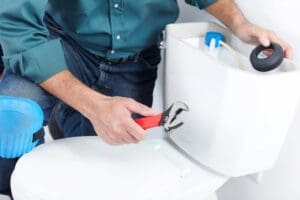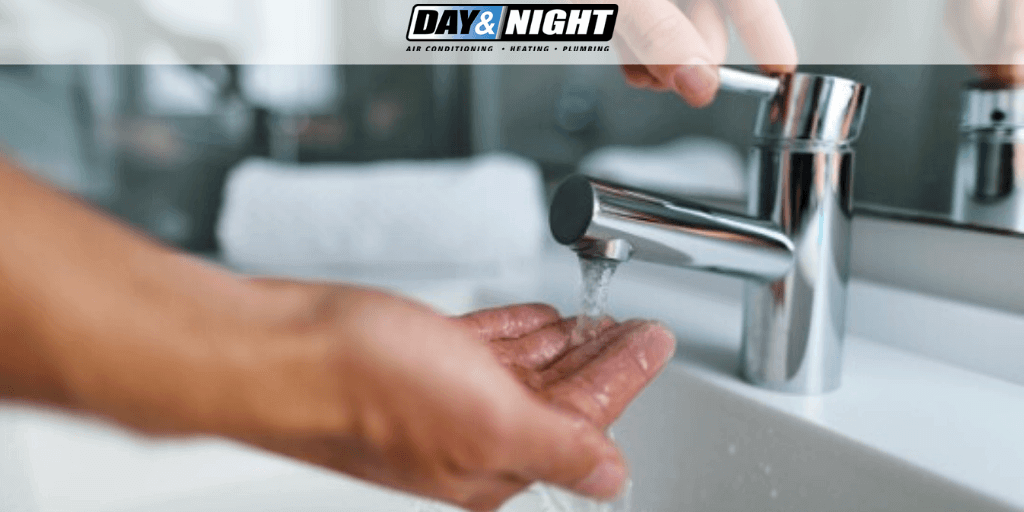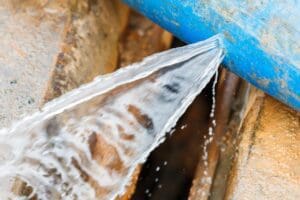Turning on the faucet and enjoying the surge of running water in the kitchen or the shower is something we often take for granted. However, there can be too much of a good thing. Pressure over 80 psi wears a typical household system.
Think about water pressure like blood pressure. When it’s too high, it raises red flags and indicates potential problems down the road.
What Causes High Water Pressure in a House?
City water systems can have as much as 200 psi to high rise buildings and fire hydrants. However, most homes have pressure around 50 psi. Distance from the water source and the size of the pipes in your water system can affect the strength of the streams coming from your fixtures.
For example, if you are at the beginning of a municipal water supply line, or near a fire hydrant, flow strength may be strong, whereas your neighbors may not enjoy the same pressure.
Water volume changes due to thermal expansion by your water heater can also produce high water pressure. Talking with your neighbors can help you determine if the problem is at your house, or if your area is experiencing issues.
Signs Your Water Pressure Is Too High
Although you may enjoy the luxury of vigorous water pressure in the shower, it can take a toll on your wallet.
Depending on the appliance or fixture, too much water pressure can result in wasted gallons of water for every use. There are some signs that your water pressure is too high and tips for how to lower water pressure in your house.
Leaky Fixtures and Appliances
O-rings, washers, and seals that fit onto standard residential fixtures and appliances are designed to withstand average water pressure. When they are subjected to higher force routinely, they fail, shortening their useable life.
If you have a leaky faucet or water heater, even after replacing the seals, high water pressure could be the culprit. Here are some tips to reducing your water pressure in your home.
Irregular Water Flow
If the water seems to spurt and sputter when you first turn on the faucet before flowing normally, or it seems like water coming from the taps is excessive, you may be having issues with water pressure that is too high.
Banging or Knocking Noises on Your Water Pipes
When you hear a dull-sounding banging noise, knowns as water hammer, coming from the pipes when you flush the toilet or turn off the faucet, you may have excessive pressure.
This can damage the pipes, resulting in expensive repairs, if not corrected.
Burst Water Lines or Hoses
Appliances such as ice makers, water filters, water softeners, and washing machines have inlet lines and hoses.
Under consistent use, the high-pressure water flowing through them can weaken them, causing ruptures.
Short Appliance Life
Water can be a powerful force. Pumps and internal seals in dishwashers and ice makers can break under the constant force.
If your appliances seem to have a much shorter functional life than you expect, it may be due to too much water pressure.
Pinhole Water Leaks in Your House
Drips or fine streams of water at the faucet or showerhead are quickly noticeable. However, this can also occur at pipe joints in the walls. You may not realize there are issues until you notice water seeping from under the baseboards or a moist area of drywall. Other signs of pinhole leaks include:
• Copper pipes look dimpled
• You hear water dripping
• Water bills suddenly higher
• There is mold or mildew
The easiest way to check for leaks is to turn off the water to the house and read the meter. Check back in a few hours, keeping the water off. If the meter shows water used during that time, you have a leak.
Many minor issues with the faucets can be corrected by replacing worn plastic or rubber O-rings. Replacing faulty fixtures may be a preferred option if they are more than ten years old. If the problem is a leaky pipe in the wall or ceiling, correcting the issue is more challenging. A professional can locate the leak quickly and fix it properly.
How Do I Test for High Water Pressure in My House?
If you experience one or more issues associated with high water pressure, you can perform a pressure check. A water pressure gauge can help you confirm whether the pressure is 60 psi or higher. Available at most home improvement stores, they typically come with adapters to fit most water outlets or residential hose bibs.
To test accurately, turn off all appliances and fixtures that use water, including washers, refrigerators with ice makers, dishwashers, and outdoor irrigation systems. This can prevent you from getting a false low reading.
Attach the gauge to a spigot closest to where the water enters your home, whether it comes from a well or municipal water line. You can also attach it to the washing machine connection.
Slowly open the valve on the connector or outdoor faucet all the way. When the needle on the gauge stops moving, that is the pressure coming into your home. Turn off the water, wait a few minutes, and test it again. If the reading is different from the first, there may be a faucet water-using appliance still on. Make sure everything is off, then try again.
If the pressure is the same and above 75 psi, the water pressure is too high. This could indicate that either the pressure reduction valve is faulty, the water pressure regulator failed, or that you do not have one or both of these devices.
Water Pressure Regulator
Many homes have a water pressure regulator. The International Plumbing Code requires them in homes built after 2002. Its job is to keep the water pressure in a home or commercial building consistent.
It is situated after the main shut-off valve where the water main comes into the house. Once you have tested for and confirmed high water pressure, look for a water regulator. The average life span is seven to 12 years, so if you have one, chances are it has failed.
It is also possible that it is set too high. If that is the case, you can adjust it by turning the screw to lower the pressure. Although 50 psi is the pre-set standard, the average water pressure in a home is 40 to 45 psi.
Water Pressure Reducer
This device lowers the pressure of water coming into your house to a safe level. It is located near the water meter and is often factory set. There are two types of water pressure reducing valves.
• Direct-acting valves are the most popular option. They have a globe-type body that is connected to the outlet of a valve by a heat-resistant, spring-loaded diaphragm. A spring holds a pre-set tension on the valve seat.
• Pilot operating valves function the same way as direct-acting devices. However, they have a minimum pressure drop setting. The internal pilot controls the position of the main valve, modulating water flow. It adds additional control for the primary regulator.
Reducing water pressure not only helps your appliances last longer, but it can also reduce household water consumption and lower the water bill. A professional plumber can help you decide which device is right for your home.
Preventive Maintenance
The mineral-rich water in Arizona can decrease the efficiency of your home’s plumbing system. Having it inspected annually or at most every two years can help you catch minor issues before they become expensive disasters.
Fix Leaking Fixtures
Fix leaky showerheads and faucets as soon as you can. Dripping taps are wasteful and cause a surge in your water use. When leaks worsen, water damage may follow. If you have hard water, sediment may build up. Remove and clean the showerhead to keep it working correctly.
Check for leaks
Pinhole leaks can cause damage over time. Appliances such as refrigerators and disposals have hoses and pipes that can leak when they become worn. Finding the problem and replacing components can help your expensive appliances last longer.
Fix Leaking Toilets 
Fix leaking or running toilets. Faulty seals around the valve seat can cause buildup. If it runs even when not recently flushed, the handle or tank stopper may need to be replaced. Help maintain these fixtures by not pouring anything other than its intended contents down the drain.
If you have recently purchased a home, a thorough plumbing inspection can identify issues that did not come up in the home inspection. Replace the water supply lines that connect to a faucet, washing machine, or toilet. This can help avoid issues before they start, ensuring they are not the cause of any plumbing issues, especially if they are more than ten years old.
Contact Day & Night Today
We often take for granted that water will flow when we turn on a faucet, the dishwasher, and the washing machine. When it doesn’t, chances are you want the problem fixed as quickly as possible.
At Day & Night Air, our professional technicians can tackle any plumbing job, large or small. Whether you need new fixtures installed, are replacing water heaters and filtration systems, or you have a plumbing emergency, we can help.
Maintaining the plumbing system in your home can increase the life span of appliances, minimize pipe obstructions, and address high water pressure. We offer annual maintenance services that include regular inspections of your home’s plumbing system.
It not only reduces unexpected failures but can also save you hundreds of dollars in expensive repairs. Contact us or call 602-900-9415 to schedule a visit or to learn more about our heating, plumbing, and air conditioning services.
Image Credit: Shutterstock/ Maridav


